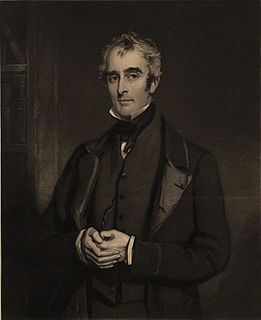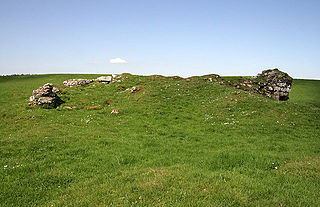Related Research Articles

Sir Walter Scott, 1st Baronet was a Scottish historical novelist, poet, playwright, and historian. Many of his works remain classics of both English-language literature and of Scottish literature. Famous titles include Ivanhoe, Rob Roy, Old Mortality, The Lady of the Lake, Waverley, The Heart of Midlothian, and The Bride of Lammermoor.

Robert Michael Ballantyne was a Scottish author of juvenile fiction who wrote more than 100 books. He was also an accomplished artist, and exhibited some of his water-colours at the Royal Scottish Academy.

John Gibson Lockhart was a Scottish writer and editor. He is best known as the author of a biography of his father-in-law Sir Walter Scott, which has been called the second most admirable in the English language, after Boswell's Life of Johnson.

Archibald David Constable was a Scottish publisher, bookseller and stationer.
This article presents lists of the literary events and publications in 1821.
William Laidlaw (1780–1845) was a Scottish poet. The son of a border farmer, he became steward and amanuensis to Walter Scott, and was the author of a well-known ballad, Lucy's Flittin.

James Ballantyne (1772–1833) was an editor and publisher who worked for his friend Sir Walter Scott. His brother John Ballantyne (1774–1821) was also with the publishing firm, which is noted for the publication of the Novelist's Library (1820), and many works edited or written by Scott.
The Bannatyne Club, named in honour of George Bannatyne and his famous anthology of Scots literature the Bannatyne Manuscript, was a text publication society founded by Sir Walter Scott to print rare works of Scottish interest, whether in history, poetry, or general literature. It printed 116 volumes in all. It was dissolved in 1861.

The Waverley Novels are a long series of novels by Sir Walter Scott (1771–1832). For nearly a century, they were among the most popular and widely read novels in all of Europe.

Lord Somerville is a title in the Peerage of Scotland which is subject to a number of ambiguities. The date of creation is not known with certainty but it was probably created about 1435 for Thomas Somerville, Justiciar of Scotland. The title was omitted in 1606 when an ordered list of the Scottish peerage was produced following the union of the Scottish and English crowns, and the title was not used during the 17th century. In 1723, however, the House of Lords ratified and acknowledged the title for James Somerville the 13th Lord. The consecutive numbers ascribed to the numerous Lords differ according to which authority is consulted. The list below uses the numbers favoured by Burkes Peerage.

The Canongate Kirkyard stands around Canongate Kirk on the Royal Mile in Edinburgh, Scotland. The churchyard was used for burials from the late 1680s until the mid-20th century.
John Ballantyne (1774–1821) was a Scottish publisher notable for his work with Walter Scott, a pre-eminent author of the time.

George Hogarth WS was a Scottish lawyer, newspaper editor, music critic, and musicologist. He authored several books on opera and Victorian musical life in addition to contributing articles to various publications.
Hugh Somerville, 5th Lord Somerville was a lord of the Parliament of Scotland. He is sometimes reckoned to be the 4th Lord Somerville. He succeeded his brother, John Somerville, 4th Lord Somerville. Hugh and John were sons of William Somerville, Master of Somerville, and Marjory Montgomerie.
John Somerville, 4th Lord Somerville, (c.1484-1523), was a Lord of the Parliament of Scotland. John was the eldest son of William Somerville, Master of Somerville, who was the son of John Somerville, 3rd Lord Somerville and Marjory Montgomerie. He was succeeded by his brother Hugh.

Cowthally Castle, also known as Couthalley, is a ruined L-plan castle near Carnwath, Lanarkshire, Scotland. The remains are protected as a scheduled monument.
Thomas Somerville, 1st Lord Somerville,, was a Lord of the Parliament of Scotland.
Events from the year 1818 in Scotland.
Events from the year 1821 in Scotland.
The Field of Waterloo is a poem by Sir Walter Scott, written and published in 1815. After the allied victory at the battle of Waterloo on 18 June 1815, Scott travelled to Belgium in August, and was one of the first British civilians to visit the battlefield. Scott was hoping to recover his expenses by publishing an account of his travels, published as Paul's Letters to His Kinsfolk (1816).
References
- ↑ Dobson, W. T. (1909). The Ballantyne Press and its founders 1769-1908. Edinburgh: Ballantyne, Hanson & Co.
- ↑ "The Ballantyne Brothers". The Walter Scott Digital Archive. Edinburgh University Library. Retrieved 5 February 2020.
| This article about a publishing company is a stub. You can help Wikipedia by expanding it. |